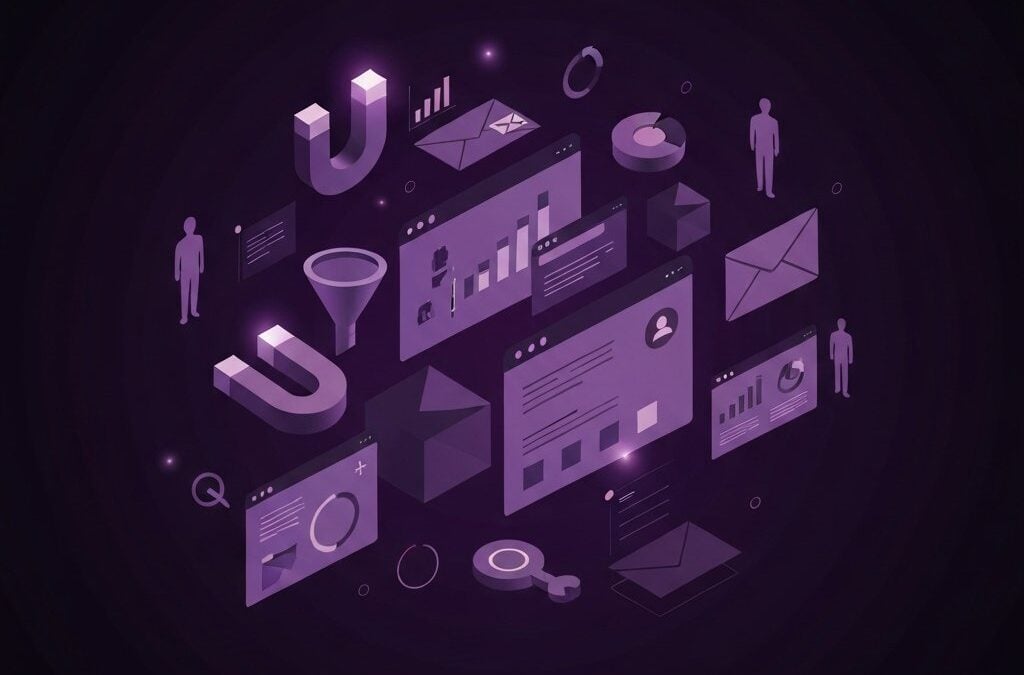Understanding the Role of AI in Business
Artificial intelligence has rapidly become a game changer for businesses of all sizes. Companies that harness the power of AI can unlock new revenue streams, optimize operations, and refine customer insight. In today’s digital landscape, understanding how AI techniques can fuel business growth is essential. “AI turns mountains of data into competitive advantage,” says industry expert John Maxwell. As organizations lean into this technology, they find smarter, faster ways to drive efficiency and innovation.
Integrating AI into your business strategy isn’t just about installing some fancy software. It is a complete mindset shift towards data-driven decision-making. When companies integrate intelligent systems, they can automate routine tasks, reduce manual errors, and predict industry trends. For instance, machine learning helps businesses forecast demand, while natural language processing refines customer messaging. AI isn’t a one-size-fits-all solution; it addresses various pain points in unique and beneficial ways.
Every business should ask: How can I use AI to change the game? The answer lies in adopting the right strategy. A thoughtful strategy ensures a balance between technological investment and business goals. As noted in a recent piece by New Horizons, AI-driven strategies are now central to future profitability, product development, and market focus. It is no wonder that ventures steeped in proven AI techniques stand to benefit significantly.
Leveraging AI also means understanding its limitations. Not every technique suits every scenario. Yet, when strategically integrated, AI equips businesses to anticipate market needs. This blend of agility and precision drives sustainable growth.
Key AI Techniques Driving Business Growth
There are several AI techniques that businesses use to gain competitive advantage. These include machine learning, natural language processing, computer vision, deep learning, and robotic process automation. Each plays a unique role in propelling growth and enhancing operational efficiency. A close look at these techniques shows that each has distinct strengths and limitations.
Machine Learning
Machine learning (ML) is a core element of AI that empowers systems to learn and improve from data without explicit programming. Businesses use ML algorithms to predict trends, tailor recommendations, and fine-tune marketing strategies. ML can sift through enormous data sets to uncover patterns that even the sharpest human analyst might miss. In retail, for example, ML enables personalized marketing by analyzing consumer behavior and past purchases. According to Accenture, ML-driven analytics can lead to smarter decision-making processes and scale operations quickly.
Natural Language Processing
Natural Language Processing (NLP) enables computers to understand and generate human languages. This technique is widely employed in customer service through chatbots and virtual assistants. NLP helps streamline interactions and generate personalized responses. Companies benefit from improved customer engagement and quicker resolution times. “NLP bridges the gap between technology and human emotion,” remarks technology critic Sarah Hughes. Its applications extend well beyond chatbots, covering sentiment analysis and content customization.
Computer Vision
Computer vision equips systems with the ability to interpret digital images and videos. For retail sectors, it means automated quality control and improved inventory management. In the automotive industry, computer vision drives advancements in self-driving technology. Businesses use this technique to monitor production lines, detect product flaws, and maintain consistent quality. As industries become more data-centric, computer vision remains essential for real-time decision-making.
Deep Learning
Deep learning, a subset of machine learning, utilizes neural networks to model complex patterns in data. This technique is particularly useful when dealing with massive datasets that require sophisticated analysis. Deep learning powers technologies such as speech recognition, image identification, and natural language translation. It has transformed how businesses predict market behavior, optimize logistics, and manage customer insights. Companies employing deep learning can uncover hidden correlations in data that are usually hard to detect in traditional systems.
Robotic Process Automation
Robotic Process Automation (RPA) automates routine, repetitive tasks using AI. RPA can help businesses reduce costs by automating mundane activities, from data entry to invoice processing. This not only frees the workforce for more creative tasks but also minimizes human error. Companies often observe an immediate efficiency boost when integrating RPA. “Automation is the key to unlocking your team’s potential,” says business strategist Amanda Lee. When combined with other AI techniques, RPA forms the backbone of an agile, modern enterprise.
AI-Powered Analytics
AI-powered analytics blends several techniques to provide comprehensive insights into data. This tool simplifies the process of extracting valuable insights, giving businesses a holistic view of their operations. By leveraging AI-powered analytics, organizations can forecast trends, assess risks, and monitor performance metrics effectively. In sectors like finance and e-commerce, such analytics have proven indispensable in staying ahead of market fluctuations.
| AI Technique | Key Strengths | Common Challenges | Real-World Applications |
|---|---|---|---|
| Machine Learning | Predictive power, automation of decisions | Requires large data sets, potential biases | Personalized marketing, demand forecasting |
| Natural Language Processing | Enhanced customer interaction, sentiment analysis | Complex language variations, contextual misinterpretation | Chatbots, customer support, content analysis |
| Computer Vision | Real-time monitoring, improved accuracy | High computational demand, required image quality | Quality assurance, surveillance, self-driving technology |
| Deep Learning | Advanced pattern recognition, handling complex data | Very data-intensive, long training periods | Speech recognition, image classification |
| Robotic Process Automation | Efficiency, cost reduction, consistency | Limited by rule-based processes, adaptation issues | Data entry automation, invoice processing |
| AI-Powered Analytics | Data integration, comprehensive overview | Integration challenges with legacy systems | Business intelligence, risk assessment |
Expanding on AI Techniques with Real-World Examples
Before the digital surge, businesses relied on conventional methods to grow revenues. Today, AI techniques have rewritten the playbook. Let’s consider a few real-world examples.
Machine Learning in Retail
Major retailers incorporate machine learning to tailor their marketing efforts to individual customers. With access to vast quantities of behavioral data, these businesses predict customer preferences and purchasing habits. For instance, a clothing retailer might use ML algorithms to dynamically adjust website recommendations, ensuring that visitors see items that match their style. This personalization not only boosts customer satisfaction but also increases conversion rates. Additionally, ML-powered demand forecasting keeps inventory levels at optimal levels, reducing waste and maximizing profit margins.
NLP for Enhanced Customer Service
Customer service has been revolutionized by natural language processing. Many companies now use NLP-driven chatbots on their websites. These bots understand and reply to customer queries almost instantly. They are available 24/7, providing consistent support without additional staffing costs. Online banking, healthcare, and e-commerce are major sectors that have witnessed substantial improvements in customer satisfaction due to NLP. A survey by Brilworks revealed that companies using NLP experienced up to a 35% reduction in support-related expenses while improving overall customer engagement.
Computer Vision in Manufacturing
In manufacturing, computer vision plays a vital role. Factories implement image recognition systems to monitor production processes. Faulty items are flagged automatically, which ensures quality control on the production line. Moreover, companies use computer vision to maintain safety standards by monitoring work environments in real time. Businesses report a significant decline in defective products and workplace incidents after implementing these technologies.
Deep Learning for Enhanced Data Insights
Companies harness deep learning to decipher patterns from massive datasets. In finance, for instance, deep learning models analyze market trends by processing historical financial data. These models produce forecasts that help in portfolio management, risk assessment, and fraud detection. This capability to learn and evolve over time makes deep learning a premier tool for uncovering intricate details about market dynamics.
RPA Simplifying Back-End Processes
Robotic Process Automation has been a boon for repetitive administrative tasks. Financial institutions, for example, leverage RPA for automating the reconciliation of invoices and processing of payments. This shift not only reduces errors but also frees up employees to focus on strategic functions that require human intuition and creativity. Industries like insurance and logistics have embraced RPA to streamline operations and reduce turnaround times.
AI-Powered Analytics Integrating Techniques
AI-powered analytics integrates multiple AI techniques to provide a holistic view of an organization’s performance. By combining machine learning with NLP and even computer vision, companies gain detailed insights into everything from customer behavior to production efficiency. This fusion of techniques means that businesses can pinpoint areas for improvement with remarkable accuracy. Even smaller companies can now leverage AI to stay competitive, transforming raw data into actionable strategy.
Implementing AI Techniques: Strategies for Success
To truly capitalize on AI, companies must adopt a practical implementation strategy. Adoption comes with challenges such as data integration, cultural shifts, and the need for skilled professionals.
Assessing Business Needs
Before diving into AI, organizations must assess their specific needs. Evaluate your operational gaps and future goals—identify tasks that can benefit from automation, customer interactions that require personalization, and optimal methods for data capture and analysis. This assessment is crucial in selecting the right AI technologies.
Building a Skilled Team
A successful AI implementation relies on combining human creativity with machine efficiency. Investing in skilled professionals who can guide AI integrations is vital. Training existing staff to adapt to new technologies also plays a key role in long-term success.
Data Collection and Quality Control
The quality of AI outcomes is directly linked to the underlying data. Robust data collection and strict quality control measures are essential to ensure that AI models perform optimally without biases or inaccuracies.
Monitoring and Adapting Strategies
With AI, the journey is ongoing. Continuous monitoring of system performance and adapting AI strategies in response to market changes are crucial to maintaining efficiency and competitiveness.
Integration with Legacy Systems
Merging innovative AI methods with legacy systems can be challenging. A phased approach helps integrate new technologies smoothly, minimizing disruptions while modernizing operations.
Best Practices and Lessons from Leading Companies
Insights from industry leaders show that effective AI adoption requires thoughtful strategies and continuous adaptation. Successful case studies highlight significant improvements in efficiency, customer engagement, and revenue growth.
Case Study: Accelerating Growth in Retail
A leading e-commerce retailer deployed an AI-driven recommendation engine combining machine learning and deep learning algorithms. This resulted in a 25% increase in conversion rates and a 40% reduction in customer complaint resolution time, boosting market share and customer engagement.
Case Study: Manufacturing Efficiency
A mid-sized manufacturer implemented computer vision for quality control and RPA for back-end processes. The result was a 30% drop in production errors and improved operational efficiency, showcasing the transformative impact of AI.
- Conduct a thorough assessment of business needs.
- Invest in talent and provide ongoing training.
- Ensure data quality with robust collection methods.
- Monitor performance and adapt in real-time.
- Adopt a phased integration with existing systems.
- Leverage multiple AI techniques for holistic insights.
The Road Ahead: Future Trends in AI and Business Growth
The AI landscape is continuously evolving, presenting new opportunities and challenges. Future advancements promise even more sophisticated algorithms that can fine-tune personalization, optimize supply chains, and predict market trends with unprecedented accuracy.
Entrepreneurs are exploring next-generation applications such as hyper-personalized customer experiences, autonomous logistics, real-time analytics integrated with augmented reality, and predictive maintenance using sensor data.
Wrapping Up the AI Journey
After exploring various AI techniques and practical applications, one thing is clear: the future of business growth is intertwined with artificial intelligence. By transforming raw data into actionable strategies, AI empowers companies to enhance efficiency, improve customer satisfaction, and drive revenue.
For more insights, visit our insights hub.
Final Thoughts
Artificial intelligence continues to reshape the business landscape worldwide. Utilizing technologies such as machine learning, NLP, computer vision, deep learning, RPA, and AI-powered analytics enables businesses to unlock unexplored opportunities and stay competitive in an ever-evolving market.
For further information, explore resources like this strategy guide and predictive analysis insights. Additionally, informative pieces on platforms like DigitalOcean and Simplilearn offer deeper dives into AI’s transformative impact.



